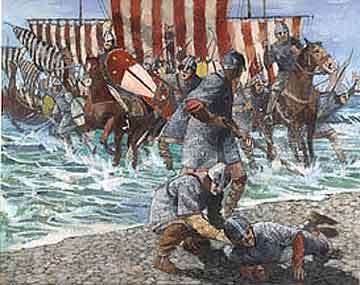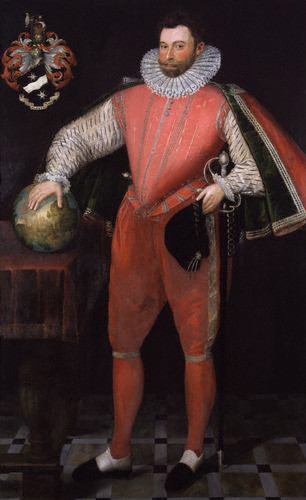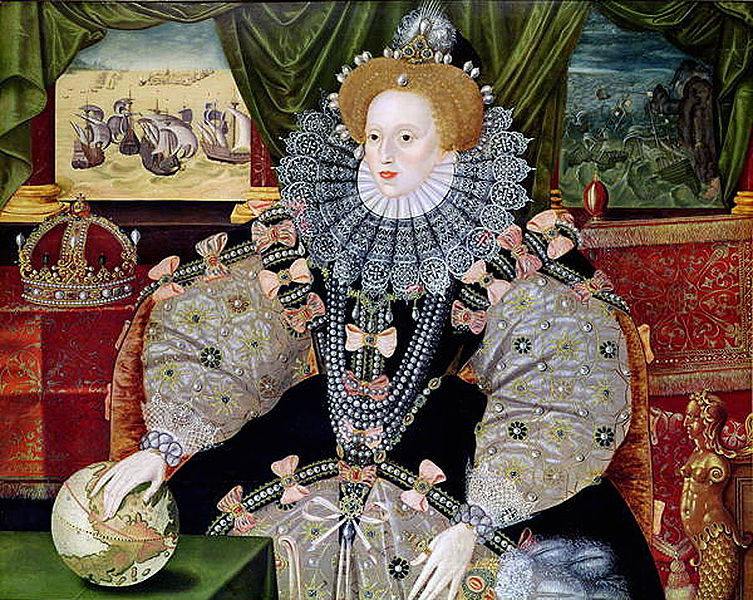
- •Voronezh state university
- •50 Things you need to know about britain.
- •50 Things you need to know about britain.
- •1). Stonehenge
- •2). St. Augustine and Christianity
- •3). Canterbury Tales
- •4) Religious settlement
- •5) Shakespeare
- •6) Gin craze and British drink culture
- •Battle of Waterloo and national identity
- •* The battlefield today
- •8)The Red House and ‘my house is my castle’
- •10) The Beatles
- •Alfred the Great.
- •Magna Charta (1215).
- •3) English Civil war of 1642 -1649.
- •4) The Glorious Revolution. (1688 - 89)
- •5) Birth of Great Britain, Act of Union in 1707.
- •6) Robert Walpole – the first Prime Minister.
- •The British Bobby.
- •Suffragettes
- •*The Suffragettes wanted the right for women to vote.
- •9). National Health Service
- •Results
- •(Http://en.Wikipedia.Org/wiki/Welfare_state_in_the_United_Kingdom) *The National Health Service
- •10). Britain Joining Europe*
- •*A History of the European Union and Great Britain
- •Introduction.
- •1). The Roman Invasion
- •2). The Norman invasion of 1066
- •3). Elizabeth I and the Spanish Armada
- •4). East India Company and the battle of Plassey
- •5) Tea and American Revolution
- •1. What is understood by the “Boston Tea Party”*?
- •3. Why did the British loose the battle?
- •6) Nelson and the Battle of Trafalgar
- •7). Slave trade
- •Campaign to abolish the slave trade
- •8) Dr Livingston and exploration of Africa*
- •9)The Windrush and the Empire
- •Identity
- •10). The Channel Tunnel* and the Eurostar
- •Early Plans
- •A Contest
- •The Design for the Channel Tunnels
- •Getting Started
- •Building the Channel Tunnel
- •Connecting the Tunnels
- •Finishing the Channel Tunnel
2). The Norman invasion of 1066
Task 5. Watch this subpart of the film, fill in the gaps and find the sentence in which the phrasal verb to be in for – наступить для кого-то is used.
There was another invasion that would transform the country beyond recognition. From Northern Germany came the Jutes, the Saxons, the Angles, giving them the name England. Next there were the 1)…… from Norway and Denmark, a nasty bunch, but perhaps the most dramatic of all were the French.
1066 was a momentous (достопамятный) year. When king Edward the Confessor died, he left no direct heirs, and his death ignited (воспламенила) a ferocious 3 way rivalry (яростное 3-х стороннее соперничество) for the English crown. In
matters of state Edward relied on Harold Godwinson. When Edward died, Harold

seized the crown. William, the duke of 2)…….., a distant cousin of Edward argued that he had been promised the crown. Harald Hardrada, the king of Norway claimed that he was related to the previous kings of England. King Harold was in for a hard time. First the Norwegians came to the 3)….. of England. Then, a few days later, William attacked from France. Poor King Harold had to bring his exhausted army back to the South. It was there that the most famous battle was fought – the battle of 4)…….. . Harold, the last 5)…..-….. king, was killed by a 6)…… archer (стрелок из лука). William was crowned the King of England on Christmas day at Westminster Abbey. Norman rule was a bloody one. William created a new French 7)….. . The best evidence of that major shift in power was the Domesday book*.
Norman society was based on a highly structured feudal system. Everybody was bound to someone of a higher rank. The serf was bound to a knight, the 8)…… – to the lord, and the 9)…. – to the King. The Normans built numerous 10)……. . Many of British treasured buildings – the Tower of London, Westminster Hall were Norman creations. The French became the dominant language. With time The English language and the French language intermarried. So we can say that the English language, the English landscape and the architecture stem from the Normans.
Task 6. Answer the following questions:
What was Norman society like?
What spheres of life in Britain were influenced by the Normans?
Cultural Commentary
*Domesday book - is the record of the great survey of much of England and parts of Wales completed in 1086. The survey was executed for William I of England (William the Conqueror). One of the main purposes of the survey was to determine who held what and what taxes had been liable under Edward the Confessor; the judgment of the Domesday assessors was final—whatever the book said about who held the material wealth or what it was worth, was the law, and there was no appeal. It was written in Latin. The book was known by the English as "Domesday", that is the Day of Judgment.
3). Elizabeth I and the Spanish Armada
Task 6. Answer the following questions:
1). What is the Spanish Armada?
2). How many ships were there in the Armada?
3). What do you know about Francis Drake?
4). What do you know about Elizabeth I?

 Sir
Francis Drake Queen
Elizabeth I, Tudor
Sir
Francis Drake Queen
Elizabeth I, Tudor
Task 7 . Fill in the gaps in the summary of this subpart while watching the film and note how many ships there were in the Spanish Armada, and how many returned home.
Fear of the sea-borne invasion is such a powerful part of British national psyche, and that fear was never stronger, nor was the threat more 1)…. than in the XVI- th century when 2) ….. Queen Elizabeth I was on the throne.
When Elizabeth ordered the execution of Mary* involved in a Catholic conspiracy (заговор) against her, she gave Philip of Spain* a perfect excuse to launch an invasion of England.
Elizabeth was expecting an almighty clash with Philip, so she was re-building the English 3)…. . But Spain was the maritime (морская) super-power of the day. Philip wanted to stop England being Spain’s naval rival. He saw England as the land supporting 4) …… and buccaneers (пиратов) like Francis Drake*. Philip was going to rely on the mighty Spanish fleet, the Armada. The invasion plan was simple: first sail the Armada from Spain through Spanish Netherlands, then cross the Channel and invade England from the south.
The English ships were smaller and more maneuverable, and they also had guns that fired faster and had a longer range. But the English fleet was much 5)……. than the massive Spanish Armada. The battle took place in May 1588. The English fleet was trapped in Plymouth by incoming tide (прилив). Drake was playing balls and did not hurry. His courage became a legend, an example of English calmness in the face of adversity (несчастья, испытания).
The Armada finally anchored off Calais* to wait for the troops to invade England. Drake and the English seized their 6) …… . In the dead of night some less valuable ships packed with explosives were set alight and sent in the direction of the wooden Armada. This caused confusion among the Spanish and the ships were scattered among the English fleet.
But was it Drake who finally defeated the Spanish? The Armada sailed into a fiercest storm imaginable. Only around 67 ships eventually returned to Spain.
The crash and defeat of the Spanish Armada gave the English a new-found sense of confidence. It was also a victory of Protestantism over Catholicism. Sir Francis Drake and his little ships taking on massive Spanish galleons perfectly fitted in with the myth of plucky little England triumphing against all the odds. The 7) ……. over Armada gave England confidence to expand her naval reach and power. Sea became their closest ally, and oceanic trade made Britain rich.
* Mary, Queen of Scots (1542 – 1587), also known as Mary Stuart orMary I of Scotland, was queen regnant of Scotland from 14 December 1542 to 24 July 1567 and queen consort of France from 10 July 1559 to 5 December 1560. Mary, the only surviving legitimate child of King James V of Scotland, was 6 days old when her father died and she succeeded to the throne. She spent most of her childhood in France while Scotland was ruled by regents, and in 1558, she married theDauphin of France, Francis. He ascended the French throne as King Francis II in 1559, and Mary briefly became queen consort of France, until his death on 5 December 1560. Widowed, Mary returned toScotland, arriving in Leith on 19 August 1561. On 24 July 1567, she was forced to abdicate in favour of James, her one-year-old son by Darnley. After an unsuccessful attempt to regain the throne, she fled southwards seeking the protection of her first cousin once removed, Queen Elizabeth I of England. Mary had previously claimed Elizabeth's throne as her own and was considered the legitimate sovereign of England by many English Catholics, including participants in a rebellion known as the Rising of the North. Perceiving her as a threat, Elizabeth had her confined in a number of castles and manor houses in the interior of England. After eighteen and a half years in custody, Mary was found guilty of plotting to assassinate Elizabeth, and was executed.
*Philip II of Spain (1527 – 1598) was King of Spain and Portugal. During his marriage to Queen Mary I, he was King of England and Ireland and pretender to the kingdom of France. Philip was born in Valladolid, the son of Charles V, Holy Roman Emperor and King of Spain, and his wife, Isabella of Portugal. Under his rule, Spain reached the height of its influence and power, directing explorations all around the world and settling the colonisation of territories on all the known continents including his namesake Philippine Islands. Philip coined the expression "The empire on which the sun never sets".
*Sir Francis Drake,Vice Admiral (1540 – 27 January 1596) was an English sea captain, navigator, slaver (работорговец), and politician of the Elizabethan era. Elizabeth I of England awarded Drake a knighthood in 1581. He was second-in-command of the English fleet against the Spanish Armada in 1588. He also carried out the second circumnavigation (кругосветное плавание)of the world, from 1577 to 1580. His exploits (подвиги) were legendary, making him a hero to the English but a pirate to the Spaniards to whom he was known as El Draque. King Philip II was said to have offered a reward of 20,000 ducats, about £4 million (US$6.5M) by modern standards, for his life.
http://en.wikipedia.org/wiki/Francis_Drake
*Callais overlooks the Strait of Dover, the narrowest point in the English Channel, which is only 34 km (21 mi) wide here, and is the closest French town to England. TheWhite Cliffs of Dover can easily be seen on a clear day from Calais. Calais is a major port for ferries between France and England, and since 1994, the Channel Tunnel has linked nearby Coquelles to Folkestone by rail. http://en.wikipedia.org/wiki/Callais
